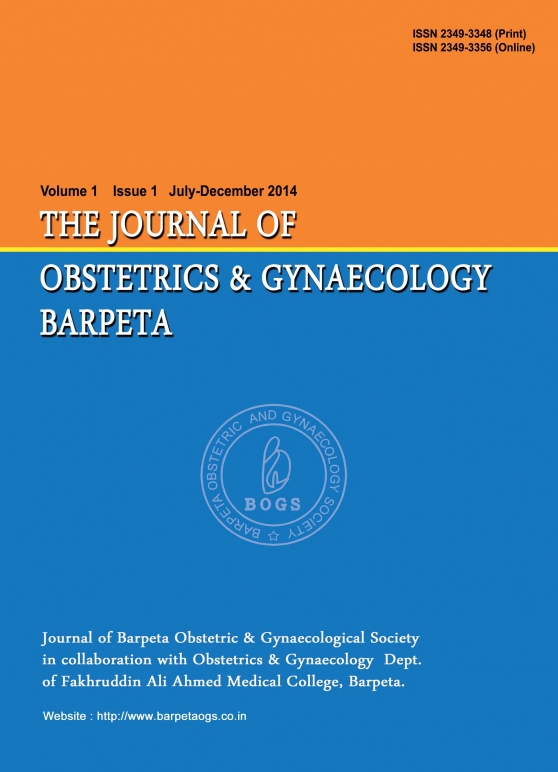
The New Indian Journal of OBGYN. Epub Ahead of Print
Histopathological profile of ovarian tumors in a tertiary care centre and impact of recent WHO 2020 classification
Sheenam Azad, Neelima Bahal, Trisha Sharma, Nidhi Kumari, Seema Acharya
ABSTRACT
Background: Ovarian tumors are amongst the common neoplasms affecting the Indian women. The grave nature of these tumors is proved by the highest mortality rates attributed by lack of symptoms in most patients and inaccessible site. The WHO 2014 classification was modified in 2020, keeping in consideration the probable tissue of origin and associated molecular basis. Objectives: This study was conducted to see the histopathological profile of ovarian tumors and impact of recent WHO 2020 classification. Methods: This study was a retrospective study conducted in the pathology department at SGRRIM & HS, Dehradun. Hysterectomies, oophorectomies and ovarian cystectomy specimens received in the pathology department over a period of four years were included in the study. Ovarian tumors classified according to the WHO 2014 classification were reclassified according to WHO 2020 classification and a comparison was made between the two. There were 114 cases of ovarian tumors, received in the department of pathology during this duration. All the relevant history, clinical findings and investigations were recorded. Results: Benign tumors were the commonest (76.9% cases) followed by malignant tumors which accounted for 20.14% of all the ovarian tumors. Borderline tumors were the least common tumors constituting only 2.87% cases. The surface epithelial tumors were the most commonly diagnosed ovarian tumors comprising 64.02% cases followed by germ cell tumors, which constituted 28.77% cases. Serous cystadenoma was the commonest primary benign tumors followed by benign teratoma. Serous carcinoma was the commonest primary malignant tumor followed by adult granulosa cell tumors. Serous carcinoma was further categorized into high grade serous carcinoma and low grade serous carcinoma which are distinct entities according to WHO 2020 classification. Endometriotic cysts which were mentioned along with endometrioid cystadenoma in benign endometrioid tumors in the 2014 classification are no longer placed in this category. Conclusion: The benign ovarian tumors are more common than the malignant tumors in all the age groups and histologically, epithelial tumors are the most common. The WHO classification 2014 and 2020 stresses upon the combined use of histopathology, immunohistochemistry and molecular pathology for better reproducibility and accurate diagnosis. There were no major changes except the terminology and categorization of certain entities especially the surface epithelial tumors.
Volume 1 Issue 2
Volume 2 Issue 1
Volume 2 Issue 2
Volume 3 Issue 1
Volume 3 Issue 2
Volume 4 Issue 1
Volume 4 Issue 2
Volume 5 Issue 1
Volume 5 Issue 2
Volume 6 Issue 1
Volume 6 Issue 2
Volume 7 Issue 1
Volume 7 Issue 2
Volume 8 Issue 1
Volume 8 Issue 2
Volume 9 Issue 1
Volume 9 Issue 2
Volume 10 Issue 1
Volume 10 Issue 2

